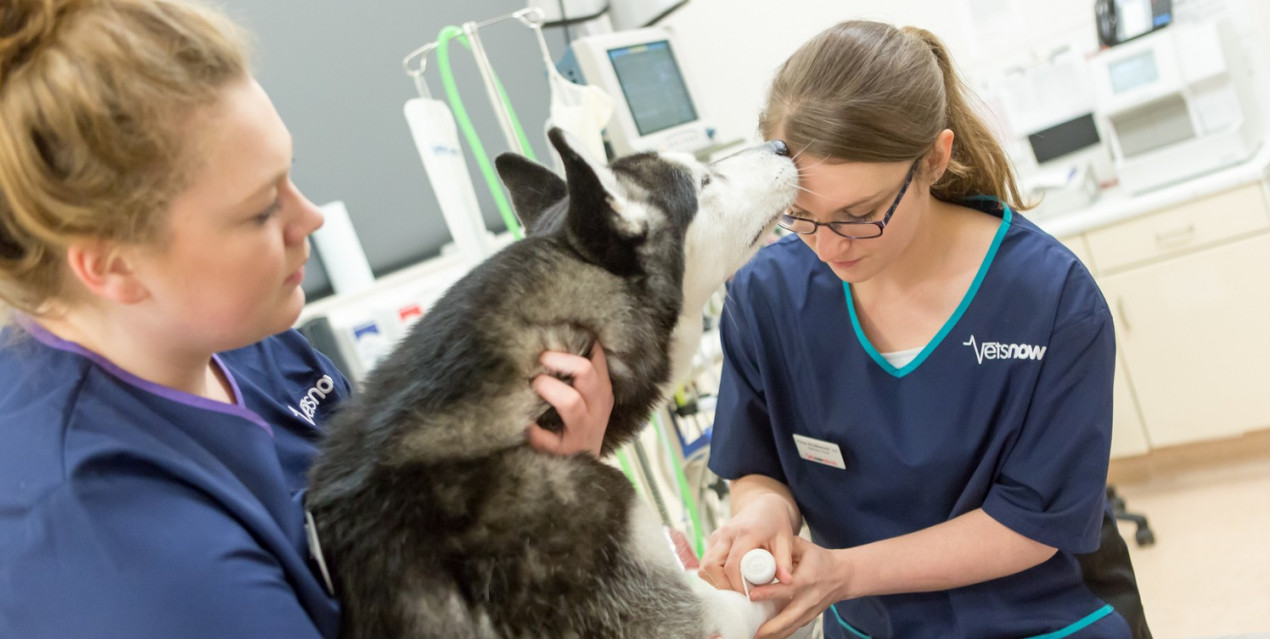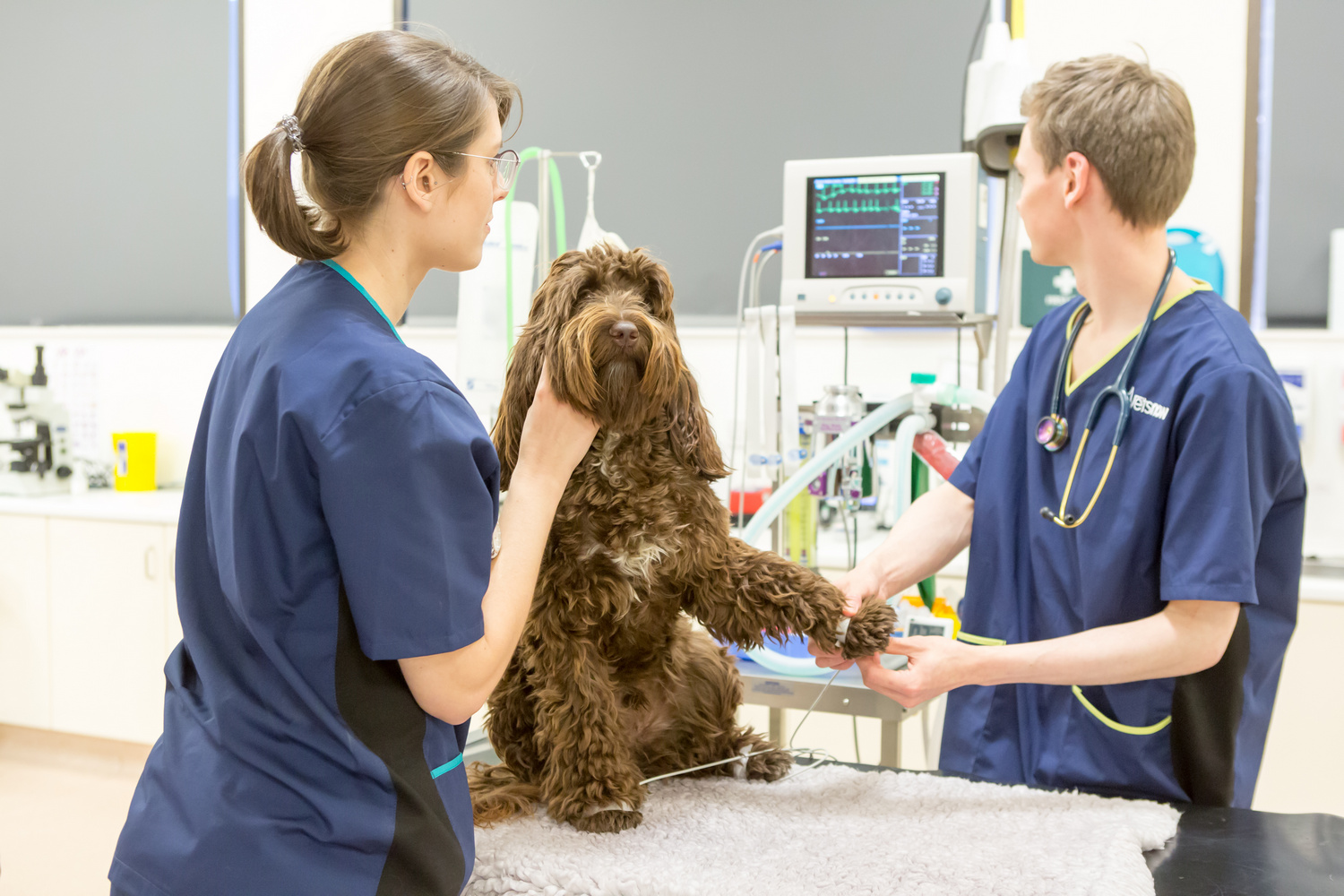
What are the causes of lameness in dogs?
Lameness in dogs is not a disease. But it is often the sign of a painful condition, such as a pulled muscle, broken bone or sprained ligament. Most limps require veterinary attention and, in some cases, especially those in which the limp has suddenly appeared, emergency treatment may be needed as the dog’s injuries may be the result of a serious accident or trauma.
Potential causes of less sudden lameness in dogs include osteoarthritis, hip dysplasia, inflammation of the bones, ligament disease and infections, all of which require veterinary attention.
What should I do about my dog limping?
If your dog has a mild limp and you’re confident it’s due to a minor injury such as a cut paw or torn nail, you should seek veterinary advice about how to treat these injuries and encourage your dog to rest for a few days, before gradually reintroducing regular exercise.
Lameness that persists for more than 24 hours or a limp that’s accompanied by severe bleeding or swelling, dragging of limbs, a broken or dislocated bone, or an inability to stand, requires immediate veterinary attention. You should also call your vet or, out of hours, your nearest Vets Now, straight away if your pet has a limp and is exhibiting other unusual symptoms, such as sickness, diarrhoea, fever, loss of appetite, excessive panting or lethargy.
Dog limping on front leg
If your dog is suffering from forelimb lameness, it’s likely their head will rise when weight is placed on the affected leg and go down when they put their healthy leg on the ground. The hind legs may appear tucked under, and the back arched, and dogs suffering front leg lameness may also take shorter than normal strides with their hind limbs.
Dog limping on back leg
It’s more challenging to spot hind leg lameness. Signs include the tail rising as the lame leg contacts the ground and the hip on the unaffected side appearing lower than its opposite number. The hip on the lame side may also have an increased vertical motion. With longer-term back leg lameness, muscle wastage around the hindquarters may be visible.
My dog is limping. What can I expect at the vet?
If your limping dog’s condition is deemed severe enough to warrant emergency treatment, the vet is likely to carry out a full physical examination, including what’s called a canine gait analysis. Depending on the severity of your dog’s injuries, this may involve the vet observing them resting, getting up, walking and trotting. Other diagnostic tests, such as blood and urine samples, may be indicated.
In more serious cases, your vet may also use imaging techniques such as X-rays and CT scans to try to diagnose the problem.
Vets often use what’s known as the lameness scale to determine the degree of lameness. Dogs suffering from grade 4 or 5 lameness (the pet is holding their leg up for some, or all, of the time) require urgent veterinary treatment. It’s worth noting that sedation may be necessary for particular tests or for moderate discomfort, to enable a thorough examination.
My dog is limping but doesn't seem to be in pain
If your dog is limping but not showing any signs of pain, it is still worth contacting your vet for advice. Because dogs can’t speak, it can sometimes be difficult to spot when they’re in pain, whether it be as a result of injury or an underlying issue. It is rare for a dog to limp without any underlying physical discomfort. It’s also worth bearing in mind that you may see your dog limping on and off sporadically and then they may seem fine.

Limping puppies
Large breed puppies are more prone than smaller breeds to developing painful bone conditions, such as hypertrophic osteodystrophy and panosteitis, while they’re still growing. These can make walking uncomfortable. Treatment for both conditions consists mainly of pain management. If you’re worried about lameness in your puppy, speak to your vet.
How do I manage leg pain in dogs?
Lame dogs are likely to recover more quickly if their pain is well managed. Your vet is the best person to speak to regarding pain relief. They will typically prescribe nonsteroidal anti‑inflammatory drugs or other pain-relieving drugs.
How to treat a limping dog at home
Please do not attempt to treat your dog’s pain yourself. Many human medications – and those prescribed for other pets – can be hazardous for dogs. If your dog is limping call your vet or, out of hours, your nearest Vets Now, for advice.
Preventing lameness in dogs
There are several risk factors for lameness. These include your dog’s breed. Some of the ailments and muscular diseases that can cause lameness are passed from generation to generation. Frequent, vigorous activity may also be a factor, as is your dog’s weight. Overweight dogs are more prone to developing some of the conditions that can lead to lameness.

